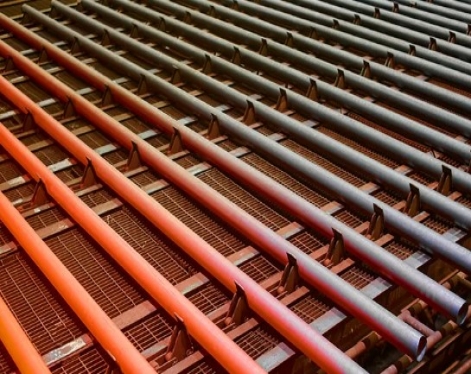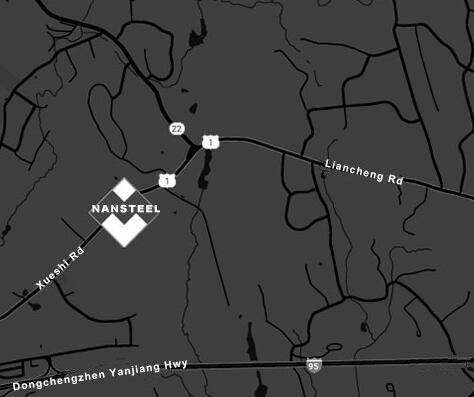The price of seamless pipe for machining is very complex and dynamic. It is affected by many market and product characteristics. It is impossible to give a fixed price because it fluctuates greatly according to several key factors carefully summarized below:
The main factors affecting the price of seamless pipes for machining
Material:
Carbon steel: Commonly used carbon steel grades such as 20# and 45# are relatively cheap.
Alloy steel: such as 40Cr, 20CrMo, 35CrMo, 42CrMo, etc., due to the addition of alloy elements, the price will be significantly higher than carbon steel, and the higher the alloy content, the higher the price.
Stainless steel: such as 304, 316L, 2205 and other stainless steel pipes, due to their excellent corrosion resistance, the price is usually much higher than carbon steel and alloy steel.
Specifications and dimensions:
Outer diameter and wall thickness: Larger outer diameter and thicker wall thickness usually mean higher raw material cost and production cost.
Small-diameter precision tubes: For small-diameter thin-walled tubes that require high precision (such as strict tolerance requirements), the production difficulty and cost are higher, and the price will increase accordingly.
Production process and precision requirements:
Hot rolled: relatively low price, average dimensional accuracy and surface finish.
Cold drawn/cold rolled (precision tube): Steel tubes that have undergone cold processing have high dimensional accuracy and a smooth surface, but the production cycle is long and the cost is higher. For example, the price of precision drawn bright tubes will be higher than that of ordinary hot rolled tubes.
Special surface treatments such as pickling and passivation, polishing, internal and external surface honing, etc., will incur additional costs.

Surface condition:
Black leather pipe: untreated original hot-rolled surface, lowest price.
Pickled pipe: After pickling to remove the oxide scale, the surface is cleaner and the price is slightly higher.
Bright tube: A tube with high surface quality after bright heat treatment or fine drawing, with the highest price.
Implementation standards: Different standards have different requirements for chemical composition, mechanical properties, dimensional tolerances, non-destructive testing, etc., which affect the price. For example, pipes that meet international standards such as ASTM and ASME may be more expensive than pipes that only meet general domestic standards.
Order Quantity: Larger purchases typically result in better bulk pricing.
Market supply and demand: The overall steel market conditions, price fluctuations of raw materials (such as iron ore, scrap steel, and alloying elements), seasonal demand, and international trade policies (such as tariffs) will all affect prices. Recently (2025), there have been reports that the mechanical pipe market may improve in the second half of this year.
Manufacturer and brand: Steel pipes from different manufacturers and brands have different prices due to their different production capacity, technical level, quality control and brand premium. Products from well-known manufacturers are usually relatively expensive, but the quality is more guaranteed.
Delivery method and freight: CIF price is different from ex-works price, and freight and logistics costs will also be included in the final price.
How to get the price of seamless pipe for machining?
Due to the large price fluctuations and complex influencing factors, the best way is to ask suppliers for quotes based on your specific needs.
When requesting a quote, you will need to provide as much detailed specification information as possible, including:
Material grades: for example, 20#, 45#, Q345B, 40Cr, 304, 316L, etc.
Outside diameter (OD): accurate to millimeters or inches, for example Φ100mm.
Wall thickness (WT): accurate to millimeters, for example 5mm.
Length requirement: fixed length (e.g. 6 meters) or variable length
Quantity: How many tons or meters/roots are needed
Precision requirements: Is it standard precision (hot-rolled) or high precision (cold-drawn/cold-rolled precision tube)? Are there any special requirements for inner and outer diameter tolerances?
Surface condition: Black, pickled, or bright?
Implementation standards: For example, GB/T 8163, GB/T 3639, ASTM A519, etc.
Other special requirements: Such as heat treatment condition (normalizing, quenching and tempering), non-destructive testing requirements, packaging requirements, etc.
Suggestions:
Contact multiple seamless steel pipe traders and manufacturers to compare prices.
Follow steel market trends and understand recent fluctuations in raw material and steel pipe prices.
If purchasing in large quantities, consider contacting the sales department of a large steel pipe manufacturer directly.
In the current market environment, steel prices are highly volatile, so obtaining real-time quotes is the most accurate method.
Read more: American Standard Seamless Steel Pipe Price
The main factors affecting the price of seamless pipes for machining
Material:
Carbon steel: Commonly used carbon steel grades such as 20# and 45# are relatively cheap.
Alloy steel: such as 40Cr, 20CrMo, 35CrMo, 42CrMo, etc., due to the addition of alloy elements, the price will be significantly higher than carbon steel, and the higher the alloy content, the higher the price.
Stainless steel: such as 304, 316L, 2205 and other stainless steel pipes, due to their excellent corrosion resistance, the price is usually much higher than carbon steel and alloy steel.
Specifications and dimensions:
Outer diameter and wall thickness: Larger outer diameter and thicker wall thickness usually mean higher raw material cost and production cost.
Small-diameter precision tubes: For small-diameter thin-walled tubes that require high precision (such as strict tolerance requirements), the production difficulty and cost are higher, and the price will increase accordingly.
Production process and precision requirements:
Hot rolled: relatively low price, average dimensional accuracy and surface finish.
Cold drawn/cold rolled (precision tube): Steel tubes that have undergone cold processing have high dimensional accuracy and a smooth surface, but the production cycle is long and the cost is higher. For example, the price of precision drawn bright tubes will be higher than that of ordinary hot rolled tubes.
Special surface treatments such as pickling and passivation, polishing, internal and external surface honing, etc., will incur additional costs.

Surface condition:
Black leather pipe: untreated original hot-rolled surface, lowest price.
Pickled pipe: After pickling to remove the oxide scale, the surface is cleaner and the price is slightly higher.
Bright tube: A tube with high surface quality after bright heat treatment or fine drawing, with the highest price.
Implementation standards: Different standards have different requirements for chemical composition, mechanical properties, dimensional tolerances, non-destructive testing, etc., which affect the price. For example, pipes that meet international standards such as ASTM and ASME may be more expensive than pipes that only meet general domestic standards.
Order Quantity: Larger purchases typically result in better bulk pricing.
Market supply and demand: The overall steel market conditions, price fluctuations of raw materials (such as iron ore, scrap steel, and alloying elements), seasonal demand, and international trade policies (such as tariffs) will all affect prices. Recently (2025), there have been reports that the mechanical pipe market may improve in the second half of this year.
Manufacturer and brand: Steel pipes from different manufacturers and brands have different prices due to their different production capacity, technical level, quality control and brand premium. Products from well-known manufacturers are usually relatively expensive, but the quality is more guaranteed.
Delivery method and freight: CIF price is different from ex-works price, and freight and logistics costs will also be included in the final price.
How to get the price of seamless pipe for machining?
Due to the large price fluctuations and complex influencing factors, the best way is to ask suppliers for quotes based on your specific needs.
When requesting a quote, you will need to provide as much detailed specification information as possible, including:
Material grades: for example, 20#, 45#, Q345B, 40Cr, 304, 316L, etc.
Outside diameter (OD): accurate to millimeters or inches, for example Φ100mm.
Wall thickness (WT): accurate to millimeters, for example 5mm.
Length requirement: fixed length (e.g. 6 meters) or variable length
Quantity: How many tons or meters/roots are needed
Precision requirements: Is it standard precision (hot-rolled) or high precision (cold-drawn/cold-rolled precision tube)? Are there any special requirements for inner and outer diameter tolerances?
Surface condition: Black, pickled, or bright?
Implementation standards: For example, GB/T 8163, GB/T 3639, ASTM A519, etc.
Other special requirements: Such as heat treatment condition (normalizing, quenching and tempering), non-destructive testing requirements, packaging requirements, etc.
Suggestions:
Contact multiple seamless steel pipe traders and manufacturers to compare prices.
Follow steel market trends and understand recent fluctuations in raw material and steel pipe prices.
If purchasing in large quantities, consider contacting the sales department of a large steel pipe manufacturer directly.
In the current market environment, steel prices are highly volatile, so obtaining real-time quotes is the most accurate method.
Read more: American Standard Seamless Steel Pipe Price
Previous:Market Demand Trend of Boiler Tubes









